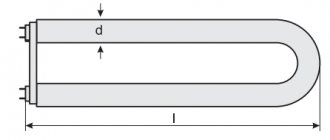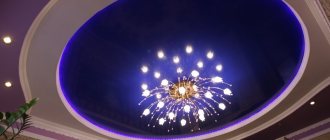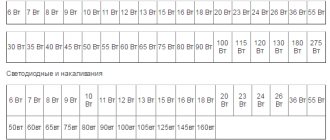Searching in the dark
What could be simpler than a regular incandescent lamp? She has become such a part of our lives that it is almost impossible to imagine her absence. But even before the middle of the 19th century, it was difficult for the average person to even imagine such a technical innovation. A splinter, a wax candle, a kerosene lamp, a gas jet - this is the small selection of lighting devices of our ancestors. But at the very beginning of the 19th century, our compatriot Vasily Vladimirovich Petrov established that with the help of an electric arc, “dark peace can be quite clearly illuminated.” The search began for how to do this; there were many inventions, but none of them went beyond the laboratories. This could have gone on for a long time if Lodygin had not created his incandescent lamp.
Opening stages
The invention of light bulbs was based on the method of glowing conductors when an electric current passed through them. He was known long before the light bulb was created. But the main problem of effective, long-lasting and affordable lighting from the electrical network was the search for a material that would be used to make an incandescent coil. Back then, when electricity was already a reality, and modern incandescent lamps had not yet been invented, scientists practiced only a few types of materials, including coal, platinum and tungsten. The last two materials were considered rare and expensive. Coal was a more accessible material.
Read also: Pressure washer for grinder
Beginning in the 19th century, events took place that contributed to the creation of the first electric light bulb. In 1820, the French scientist Delarue created a light bulb with platinum wire. The wire warmed up and glowed, but it was just a prototype. But 18 years later, a researcher from Belgium, Jobart, showed a carbon incandescent lamp. In 1854, the German scientist Heinrich Goebel used bamboo as a source of lighting.
Let there be light...
The remarkable Russian scientist Alexander Nikolaevich Lodygin was born on October 18 (according to modern times), 1847 in the Tambov province. In 1868 he graduated from the Moscow Junker Infantry School, but decided not to pursue a military career, retired in 1870 and from now on devoted all his time to invention.
A. N. Lodygin
Source: upload.wikimedia.org
For the first time, Lodygin publicly showed how incandescent light bulbs could be used in an urban environment already in 1873. An eyewitness to these events later said: “Lodygin was the first to take the incandescent lamp out of the physics room onto the street.” Another experiment was also carried out in St. Petersburg. On Morskaya Street, Florent's store was illuminated with its lamps. The bulbs worked for two months. It was a great success.
The hitherto unprecedented invention was a glass vessel, inside of which a rod of retort coal with a diameter of 2 mm was fixed on two copper rods. The current was supplied through wires that passed through the frame covering the opening of the vessel. You can still see this by picking up an ordinary light bulb. True, now it all looks a little different, has a more thoughtful technical design, and has become neater and safer.
Lodygin light bulb design diagrams
Source: rodich2007.livejournal.com
Lodygin's invention was immediately appreciated abroad. Several European countries granted him privileges (that is, patents) for the invention. And this despite the fact that the service life of such a lamp was only 40 minutes. But the inventor did not stop working, constantly making changes to the design. Other scientists suggested pumping air out of lamps and using various substances for filaments. As a result of improvements, the lamps began to work for 700-1000 hours.
In 1872, Lodygin applied for his invention, and on July 23, 1874 he received a patent (privilege No. 1619). The Academy of Sciences appreciated this invention and awarded the author the Lomonosov Prize in the amount of 1000 rubles. The honorable mention stated that the prize was given for a discovery “promising to revolutionize the important question of lighting.”
The history of the light bulb
Of course, the history of the creation of the lamp is inseparable from the development of such a science as electrical engineering. It dates back to the discovery of electric current in the 18th century. This discovery contributed to the fact that outstanding scientists from all over the world began to study and develop electrical engineering, which by that time had become an independent science.
- The 19th century became the century of global discoveries. In 1800, the galvanic cell, a chemical source of current, was invented. It is also called the voltaic column in honor of the Italian scientist Alessandro Volta.
- The following year, in St. Petersburg, the management of the St. Petersburg Medical and Chemical Academy purchased an electric battery. This powerful device was purchased for the office of Professor Vasily Petrov. The battery consisted of 420 pairs of galvanic cells. For a whole year, Professor Petrov conducted experiments with it, until in 1908 he discovered the famous electric arc. It is a discharge that occurs between carbon electrode rods separated at a certain distance. It was then that it was proposed to use an electric arc as a light source.
- The first step towards the creation of modern incandescent lamps was the invention in 1809 of the first lamp with a platinum spiral at the base. This was done by the Englishman Delarue.
- A few decades later, in 1854, the German scientist Heinrich Goebel created a similar device. The main difference was that he used charred bamboo thread placed in a vacuum vessel. That is, this option was already much closer to the electric lamp known to us all. Goebel continued to improve his invention for another five years, creating a device that is called the first practical lamp. Unfortunately, he could not obtain a patent, because he was an emigrant without money or connections. However, he used his invention to illuminate the watch shop he owned.
- As for mass electric lighting, our compatriot, the outstanding scientist Pavel Nikolaevich Yablochkov, made an undoubted contribution. He began his experiments in Russia and then continued in Paris after emigrating. It was he who created a simple, inexpensive and durable “electric candle”. In 1876, the scientist presented his invention at an exhibition in London. In the same year, lamps created by Yablochkov began to appear first on the most visited streets of Paris, and then spread throughout the world.
ON A NOTE! A distinctive feature of the “Yablochkov candle” was that it did not require a vacuum. The filament, made of kaolin, did not burn out and did not lose its properties in the open air.
And, of course, speaking about the history of electrical engineering, one cannot help but recall the scientists who turned the world upside down - Alexander Lodygin and Thomas Edison. It was they who, conducting experiments independently of each other, created an electric lamp in the 70s of the 19th century.
Read also: Making balls on a lathe
Who first invented the light bulb
In the 1870s, serious work began on the invention of the electric light bulb. Many prominent scientists and inventors devoted years and decades of their lives to working on this project. Lodygin, Yablochkov and Edison - these three inventors worked in parallel on the design of incandescent lamps, so disputes still continue about which of them can be considered the world's first inventor of the incandescent electric lamp.
Lamp by A. N. Lodygin
He began his experiments on the invention of the incandescent lamp in 1870 after his retirement. At the same time, the inventor was simultaneously working on several projects: creating an electric plane, a diving apparatus and a light bulb.
In 1871-1874, he conducted experiments to find the most suitable material for an incandescent coil. Having initially tried to use iron wire and failed, the inventor began experimenting with a carbon rod placed in a glass container.
In 1874, Lodygin received a patent for the incandescent lamp he invented, not only Russian, but also international, patenting his invention in many European countries and even in India and Australia.
In 1884, for political reasons, the inventor left Russia. For the next 23 years he worked alternately in France and in the USA. Even in exile, he continued to develop new designs for incandescent lamps, patenting those that used refractory metals as the material for the spiral. In 1906, Lodygin sold these patents to the General Electric Company in the USA. During his research, the inventor came to the conclusion that the best materials for incandescent filaments are tungsten and molybdenum. And the first incandescent lamps produced in the USA were made according to his design and with tungsten filament.
Yablochkov's lamp P.N.
In 1875, finding himself in Paris, he began inventing an arc lamp without a regulator. Yablochkov had begun work on this project even earlier, while living in Moscow, but failed. The capital of France became the city where he was able to achieve outstanding results.
By the beginning of the spring of 1876, the inventor completed work on the design of an electric candle, and on March 23 of the same year he received a patent for it in France. This day became significant not only in the fate of P. N. Yablochkov himself, but also a turning point for the further development of electrical and lighting engineering.
Yablochkov's candle was simpler and cheaper to operate than Lodygin's coal lamp. In addition, it did not have any springs or any mechanisms. It looked like two rods clamped in two separate terminals of a candlestick, which were separated by a kaolin partition, isolating them from each other. An arc charge was ignited at the upper ends, after which the arc flame slowly burned the coal and vaporized the insulating material, at the same time emitting a bright glow.
Later, Yablochkov tried to change the color of the lighting, for which he added salts of various metals to the insulating material for the partition.
In April 1876, the inventor demonstrated his candle at an electrical exhibition in London. The large audience was delighted with the bright bluish-white electric light that flooded the room.
So who actually invented the light bulb?
Well, this is a complex question and of course it cannot be answered in one line.
The story of this incredible invention begins long before the light bulb's first commercial success in 1879. To better explain this story, we've made a timeline of the major breakthroughs in the development of the incandescent light bulb.
1761: Ebenezer Kinnersley first showed that wire could become incandescent.
1802: Humphry Davy created an incandescent light bulb by passing current through a thin strip of platinum. The current was generated from a 2000 cell battery. However, the light lasted for a very short time and was not bright enough.
1835: James Bowman Lindsay invented a constant electric light that could allow people to read books from a distance of 45 centimeters. However, he didn't come up with a better design later on.
1838: Marcellin Jobard used a carbon filament to create an incandescent lamp contained in a small vacuum space.
1840: To extend life, Warren de la Rue passed a current through a spiral platinum filament enclosed in a vacuum tube. Although the idea worked great, the high cost of platinum prevented it from becoming a commercial success.
1841: The first patent for an incandescent lamp (consisting of platinum wires enclosed in a vacuum tube) was issued to Frederic de Moleynes.
1845: John W. Starr used carbon filaments to create incandescent light bulbs. He was granted a patent for this invention, but he died a year later, and his creation never saw the light of day.
1859: Moses Gerrish Farmer used a platinum filament to create incandescent electric lamps. A few years later, Thomas Edison bought his patented technology.
1872: Alexander Lodygin used two small carbon rods (sealed in a glass) to create an incandescent lamp. The current could pass from one rod to another, and the glass was filled with nitrogen. He acquired patents for incandescent lamps made from various filaments, including tungsten, molybdenum and chromium.
1874: Henry Woodward and Matthew Evans invented a flask with carbon rods mounted in a cylindrical beaker filled with nitrogen gas. They were unable to commercialize their invention and so sold their patent to Thoman Edison in 1879.
Carbon incandescent lamps darken the insides of their glass bulbs
1878: Joseph Wilson Swan had been working on his own version of the light bulb since 1850. With the advent of better vacuum pumps in the 1870s, Swan's prototype improved: he encased treated cotton thread in vacuum glass, which ultimately eliminated the problem of early blackening of the bulb and increased its life to 13.5 hours. He acquired a British patent in 1880.











